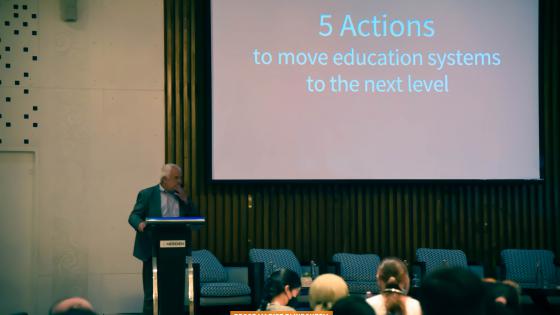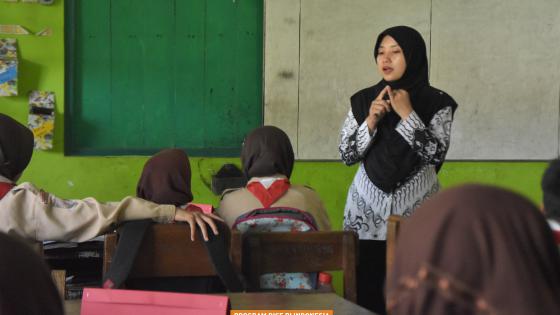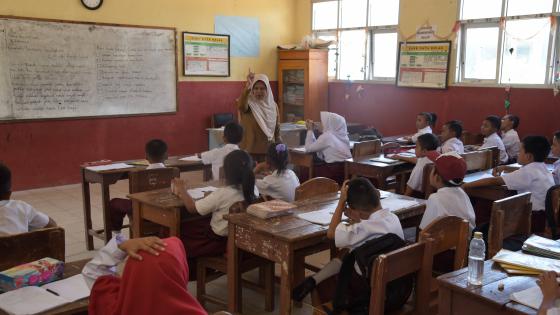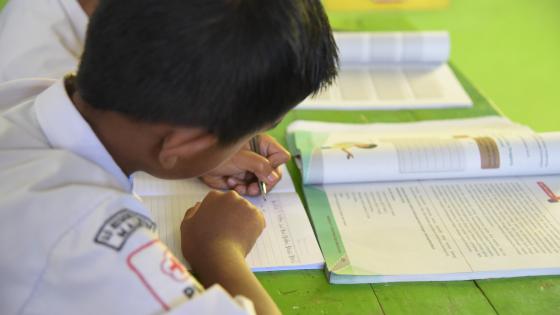Photo: Tony Liong
![]()
-
This article is translated from Indonesian. The original article was published in The Conversation Indonesia.
-
A decade ago, in an effort to build anti-corruption characteristics among students, Indonesia's Corruption Eradication Commission and the Attorney General’s Office created the Honesty Canteen programme, establishing 1,000 canteens in state schools. It failed.
The canteens sold food, drinks, and necessities for students in school without any shopkeeper. Students were to take the items, pay, as well as take the change for themselves. What happened? Most canteens went bankrupt because students took items without paying.
Honesty is not a type of natural behaviour. It is rather a result of a social system that systematically and continuously promotes integrity. Students’ dishonesty is linked to society being corrupt. In Indonesia, the institutions within the society, including schools, has failed to make honesty a habit and culture.
How can schools produce individuals with integrity? What is wrong with the existing system and the practice of learning in school for decades?
Teaching versus educating
Initially, schools were places for children to fill their leisure alongside their basic rights to play. In their spare time, with the guidance of knowledgeable and skilled people, children are taught literacy, numeracy, and life skills. They also are educated on matters related to morality, religion, and aesthetics.
Teaching outcomes can be measured through the number of school years from elementary to college. Meanwhile, education outcomes are assessed on a person's daily behaviour in their family and environment life.
School management in Indonesia reflects the history of the development of the department or ministry that regulates it. At the beginning of Indonesia’s independence (1945–1950), the nomenclature used was the Department of Teaching, whose minister was Ki Hadjar Dewantara.
In the subsequent six cabinets, teaching nomenclature was still used. The next six cabinets used the nomenclature of the Department of Teaching, Education, and Culture.
At the beginning of Indonesia's independence, schools generally consider teaching as the transfer of knowledge and skills to educate the nation. In subsequent cabinets (1951–1966) the government began to use the nomenclature of the Department of Education, Teaching and Culture (PP and K). Since then, the word education has always been placed in front.
At that time, political parties clashed on ideological differences. Every party fought based on a clear ideology, such as religion, nationalism, socialism or communism. This then led to disagreements, disputes, conflicts, and competition.
These agreements started to spill in the streets among lay people. That's when public policy makers began to think about the need for moral (character) education to instill, among others, polite behaviour, mutual care and care for each other, and respect for diversity.
The New Order regime (1966–1998) changed the nomenclature again to Ministry of Education and Culture, with the word teaching omitted. In this era, parties no longer hold the ideology that underlies the strength of their struggle. However, violations of social values such as fraud, deception, intolerance, corruption, collusion, nepotism continue to occur.
Lant Pritchett's book The Rebirth of Education: Schooling Ain’t Learning (2013) related the lack of attention to teaching, which is relevant to Indonesia's case too.
Is school a factory?
To this day, Indonesia has not found an agreement on the model of character education. One that deserves consideration is the character learning system proposed by Gede Raka, a member of Jati Diri Bangsa Foundation. He emphasised that character education in schools requires a change in perspective.
According to Gede Raka, a character education researcher and professor of the Bandung Institute of Technology, we need to avoid the perspective that sees schools as factories. According to this view, school factories produce graduates whose quality is measured by the score of national examinations, employ “machines” called teachers, and use a production system called curriculum.
In the production system, character is not essential. Machines, production systems, and products are all passive without any character, aspiration, or initiative. Thus, school being a factory is not an accurate perspective for character education.
School as a community, especially a learning community, is the more suitable concept for character development. The community is not merely a group of people; it is a group of people who are united by values.
According to Aristotle, moral values are the pillar of character strength. Values, as well as character, are reflected through one's behaviour in social interaction. As part of the community, teachers, students and parents have their respective roles and responsibilities. Mutual trust, mutual respect, willingness to share, and shared aspirations are important.
In addition to the perspective of school as a learning community, character education needs to see each student as a bud with different potentials. Character has a plurality of dimensions, such as creativity, curiosity, courage, perseverance, honesty, compassion, kindness, fairness, leadership, and others.
The various dimensions of characters can be channelled through multiple forms. Besides the plurality of dimensions, characters grow from an early age. For example, the interaction between a mother and a baby is the initial stage of developing a character of affection. Relationships with brothers, sisters or siblings in childhood can forge the character of nobleness. Thus, efforts to build character cannot rest on the view that students are uniform “raw materials” that will become valuable after processing.
Since students are different buds, the school's main task is to recognise the potential of each student. Teachers play a significant role in identifying and developing student potential. To develop potentials, uniformity of excessive learning processes can hinder the growth of student excellence because diverse potential often requires different forms of support.
Teachers can recognise and develop diverse student potential using a multiple intelligence perspective developed by Harvard psychologist Howard Gardner. Students who are good at math are superior students; likewise, students who are good at painting, singing, or language.
By using their respective advantages, students have the potential to be independent and bring benefits to the community when they enter the workforce.
Complement each other
In another history, we know the name of the Institute of Teachers Training and Education (IKIP). The terms “teachers training” is mentioned first before the word education. After state IKIPs became state universities, teachers’ colleges (LPTK) emerged, and left the terms “teachers training”.
Based on the historical dynamics of the development of the use of the words teaching and education, there are indications that the two words contain concepts that cannot be equated, but are also difficult to distinguish and cannot be separated. So, schools need to understand and put in place teaching and education theories and practices according to their respective functions. Both must exist and complement each other.
The history of the development of teaching and education in Indonesia shows that they complement each other and have their respective roles. School as a vehicle for learning requires a perspective, practice, and partnership that is suitable for teaching, which transfers knowledge and education that fosters character.
When designing and implementing ideas related to learning, schools should pay attention to the different roles of teaching and education in an integral unit. Thus, the story of Honesty Canteen going out of business due to dishonesty in schools will not reoccur.
Shanti Agung, researcher of the Authentic Education Society Bandung, co-authored this article.









